Mechanics: Levers, Pulley, Wheel & Axles
1/28
There's no tags or description
Looks like no tags are added yet.
Name | Mastery | Learn | Test | Matching | Spaced |
|---|
No study sessions yet.
29 Terms
A __ is a simple machine consisting of a rigid bar that pivots around a fixed point called the fulcrum. The classification of levers depends on the arrangement of the fulcrum, effort, and resistance:
lever
The fulcrum is between the effort and the resistance. Example: seesaw, crowbar, scissors.
First Class Lever

The resistance is between the fulcrum and the effort. Example: wheelbarrow, nutcracker.
Second Class Lever

The effort is between the fulcrum and the resistance. Example: tweezers, baseball bat, fishing rod.
Third Class Lever

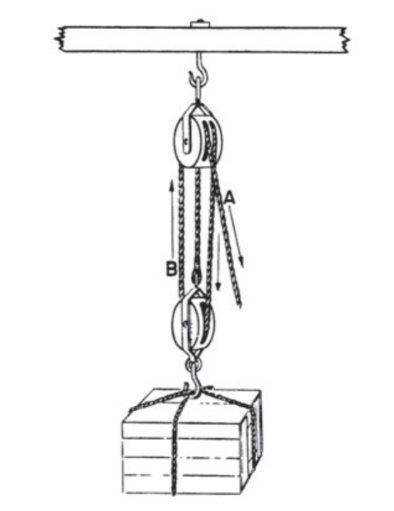
A __, also known as a pulley system, is a simple machine that uses ropes and blocks to lift heavy objects with less effort.
By arranging pulleys in different ways, the system provides mechanical advantage, allowing a person to lift a load with reduced force.
block and tackle
How can you quickly determine the mechanical advantage of a pulley system?
The mechanical advantage of a pulley system is approximately equal to the number of rope sections going to and from the movable block.
For example, if there are three ropes supporting the load, the mechanical advantage is 3, meaning only one-third of the effort is needed to lift the weight.
A __is a simple machine consisting of a wheel or crank rigidly attached to an axle that turns with it. It is used to multiply force, making tasks like turning a screwdriver or opening a door easier.
wheel and axle
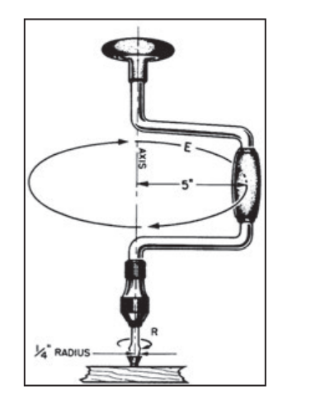
The mechanical advantage is determined by the ratio of the radius of the wheel to the radius of the axle.
L/ l = R/E
L = radius of the circle through which the handle turns
l = one half the width of the edge of the screwdriver blade
R = force od the resistance offered by the screw
E = force of effort applied on the handle
5/1/4=R/10
R = 5 × 10/ ¼ = 200
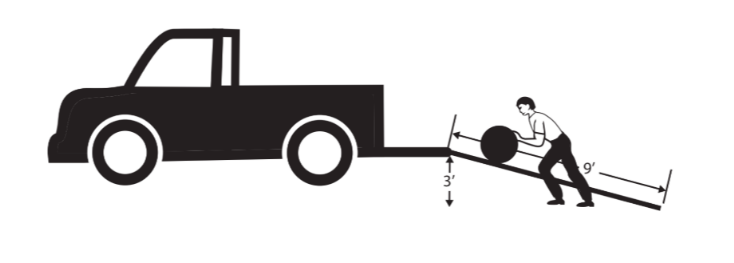
An __is a simple machine that allows a heavy object to be moved with less force by increasing the distance over which the force is applied.
inclined plane
The mechanical advantage (M.A.) of an inclined plane is calculated using the formula:
Mechanical Advantage=Length of the Ramp(L)/Height of the Ramp(ℓ)
For example, if a 9-foot ramp is used to raise a 300-pound barrel to a height of 3 feet, the mechanical advantage is?
9/3 = 3
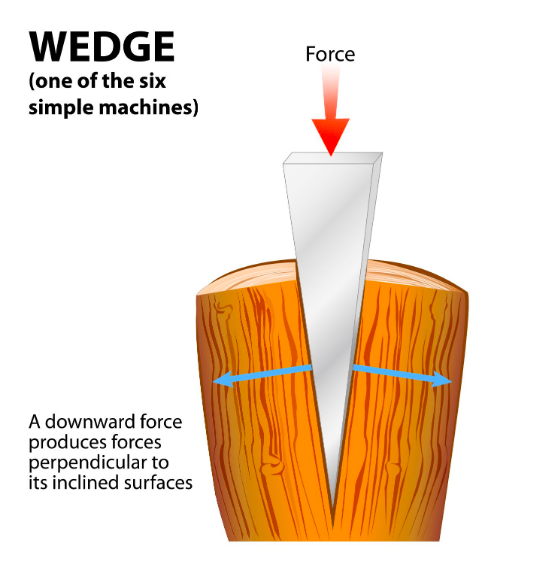
A __ is a specialized form of an inclined plane, consisting of two inclined planes placed back-to-back.
It is used to split or cut materials by converting a force applied to its blunt end into a larger force that spreads materials apart.
Examples include knives, axes, and chisels. Long, slim wedges provide higher mechanical advantage, making cutting or splitting easier.
wedge
A __ is a simple machine that is a modified form of the inclined plane. It provides mechanical advantage by converting rotational force into linear motion.
screw
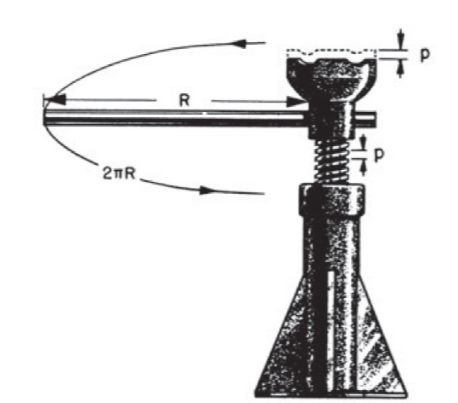
The mechanical advantage (M.A.) of a screw is determined by the ratio of the distance moved by the effort to the distance the load is raised.
For example, in a jackscrew, turning the handle moves the screw a small vertical distance, allowing heavy objects to be lifted with minimal effort.
Mechanical Advantage=Circumference of the Screw’s Rotation(2πR)/Pitch of the Screw(p)
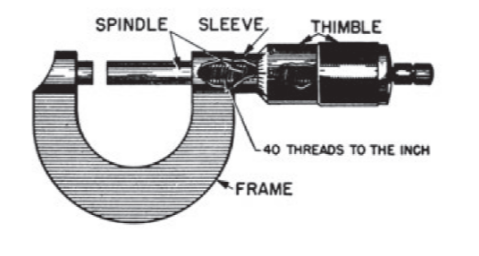
A __ uses the principle of the screw to make extremely precise measurements.
The small pitch of the screw allows for very fine adjustments, meaning that even a small turn of the screw results in tiny, accurate movements, enabling measurements down to a few thousandths of an inch.
micrometer
What are the functions of gears in machines?
Change the direction of motion
Increase or decrease speed
Magnify or reduce force
Provide a positive drive without slippage
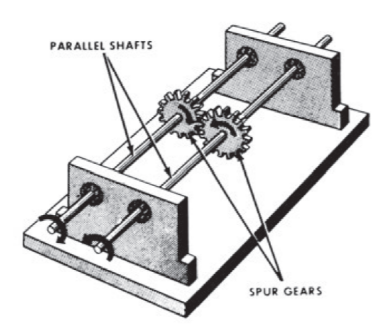
Have straight teeth and are used for simple, direct motion transfer.
Spur Gears
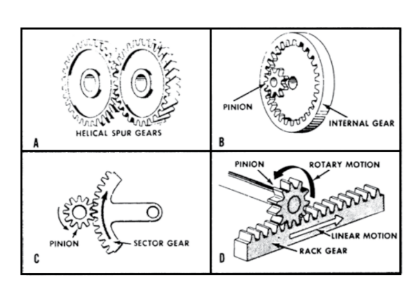
Have angled teeth for smoother and quieter operation.
Helical Gears
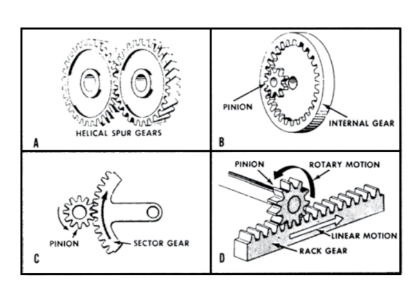
Connect shafts at an angle, commonly at 90 degrees.
Bevel Gears
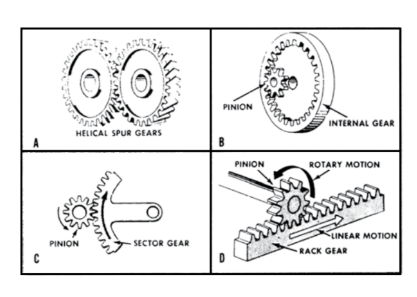
A type of bevel gear specifically designed for 90-degree connections.
Miter Gears
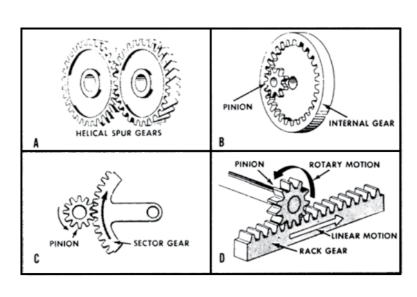
Have curved teeth for reduced noise and smoother operation.
Spiral Bevel Gears

Used for large speed reductions, similar to a screw mechanism.
Worm Gears
___, in mechanical terms, is done when a force moves an object through a measurable distance. It is calculated using the formula:
___ (foot-pounds)=FORCE (pounds)×DISTANCE (feet)
For example, lifting a 90-pound bag 5 feet requires:
90×5=450 ft-lb of work.
Work
What are two important considerations when calculating work?
Measure the actual resistance overcome, not just the object's weight. For example, pulling a cart involves overcoming rolling friction, not the full weight of the load.
Movement is required for work to be done. Holding a heavy object without moving it does not count as work in a mechanical sense.
___ is the resistance between two surfaces in contact. It can be helpful (e.g., providing traction) or undesirable (e.g., reducing efficiency in machines).
Because of friction, the actual mechanical advantage of a system is always less than its theoretical mechanical advantage.
Friction
__ is the rate at which work is done. Unlike work, power includes a time element, measuring how quickly work is performed.
Power
__ is defined as force per unit area and is measured in pounds per square inch (psi).
P = F/A
Pressure